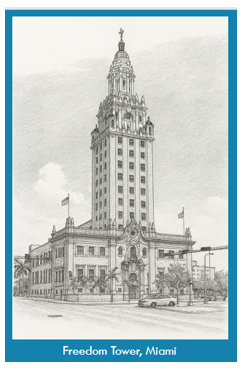- Home
- Florida History
- Florida Heritage Sites
- Bulow Plantation Ruins Historic State Park
BULOW PLANTATION RUINS
HISTORIC STATE PARK
By Mike Miller November 22. 2025
OVERVIEW
Bulow Plantation Ruins Historic State Park near Flagler Beach, Florida preserves the remnants of one of East Florida’s largest antebellum sugar plantations.
It covers 150 acres and features the coquina rock ruins of a sugar mill and plantation house.
 Bulow Plantation Ruins Historic State Park
Bulow Plantation Ruins Historic State ParkVisitors get a glimpse into Florida’s plantation history including the rise and fall of sugar plantations in East Florida.
HISTORICAL SIGNIFICANCE
The Bulow Plantation was established in the early 1800s and was first owned by Major Charles Wilhelm Bulow, who developed it into one of the largest pre-Civil War sugar plantations in East Florida.
The plantation’s operation depended heavily on enslaved African American labor, with over 100 slaves who cultivated and processed sugarcane in the Florida heat.
The plantation included a sugar mill, slave quarters, and extensive fields. Besides sugar cane, they also grew cotton, rice and indigo.
Major Bulow died in 1823 and his son, John Joachim Bulow took over at age 16. He used progressive farming techniques and made improvements to the plantation.
John transformed the 9,000 acre estate into a symbol of East Florida's frontier wealth, with over 300 enslaved laborers working the plantation.
His Paris education and cosmopolitan flair made it a hub for intellectuals and explorers amid the wilds.
He had lavish dinners, hunting parties via his eight-oared barge (stocked with guns, nets, tents, and cooks), and lively gatherings in the two-story mansion.
John was young and single, earning a reputation as a "dashing" and "spirited" young man who thrived on the social whirl.
Despite the plantation's isolation, he cultivated a salon-like atmosphere, drawing elites who marveled at its opulence amid the frontier.
His guests included writers and wealthy traders who arrived by barge or horseback.
The most famous guest was the renowned naturalist and artist John James Audubon, who stayed from Christmas Day 1831 into early January 1832.
Audubon, working on his epic Birds of America, walked 12–15 miles from where he was staying at General Joseph M. Hernandez's Mala Compra Plantation to Bulowville, as it was then called.
He was drawn by John Bulow's shared French fluency (from Audubon's Haitian upbringing). Audubon praised the hospitality in letters, calling John "the generous Bulow".
He used the estate as a base for bird hunts, including pelican expeditions paddled by enslaved workers. Audubon's illustration of Greater Yellowlegs even depicts Bulowville's buildings in the background.
The plantation became a strategic location during the turbulent period of the Second Seminole War.
The Bulow Plantation had coexisted peacefully with the Seminole Indians and engaged in trade with them.
Seminole leaders like King Philip (Emathla), his son Wild Cat (Coacoochee), Billy Bowlegs and other Seminole Indians made frequent visits to Bulowville.
The Seminole exchanged venison, wild hogs, and coontie flour (a Native American flour) for cloth, salt, rum, and silver dollars, fostering good relations. The Plantation used the same flour as the Seminoles.
John Bulow didn't agree with the U.S. government's intentions regarding the Seminoles, particularly the policy of relocating them to reservations west of the Mississippi River.
When the Mosquito Roarers, a militia group from St. Augustine, arrived to seize his plantation for the US military, Bulow fired a warning shot from a cannon as a form of resistance.
The Mosquito Roarers was an American were named for their location in what was then known as Mosquito County. They were called into service during the Fall of 1835 to fight Seminoles.
Troops took Bulow prisoner and placed him on house arrest at the plantation. He was held in an outbuilding while soldiers occupied Bulow Plantation and fortified it with cotton bales and a stockade.
Local planters and refugees took shelter there during the hostilities. The militia used the plantation's boats to conduct raids on Seminole camps along the nearby creek.
Around January 11, 1836 the Seminoles burned “Bulowville,” which included the plantation and surrounding structures.
John Bulow was forced to evacuate, walking up Old Kings Road with refugees and wounded soldiers as his plantation was destroyed around him.
The prosperous plantation was heavily damaged and never rebuilt, leaving the ruins that are preserved today. Bulow died a few months afterwards, not yet thirty years old.
In the years since, people have mistaken the Plantation's ruins for old Spanish ones. The coquina rock has aged beautifully.
Bulow Plantation Ruins was added to the National Register of Historic Places in 1970. It represents antebellum plantation economy and the complex history of slavery in Florida.
Ruins of the former plantation, a sugar mill, a unique spring house, several wells and the crumbling foundations of the plantation house and slave cabins show how volatile the Florida frontier was in the early 19th century.
VISITING DETAILS
Bulow Plantation Ruins Historic State Park is located at 3501 S. Old Kings Road, Bunnell, Florida 32110, about three miles west of Flagler Beach.
The park is open to visitors Thursday through Monday from 9 a.m. to 5 p.m. and is closed on Tuesdays and Wednesdays. Parking is available on-site in a lot near the visitor center.
The center has interpretive displays about the plantation’s history and the sugar production process.
You can explore the ruins of the sugar mill and plantation house foundations, hike several trails through the surrounding forest, and enjoy picnicking in the park.
A screened picnic pavilion with restroom is available to reserve for large gatherings like family reunions.
The trails provide a peaceful setting to experience both the natural environment and the historical significance of the site.
Wear good walking shoes as some trails are moderately challenging. A boat ramp provides access for canoes and small powerboats to Bulow Creek, a designated state canoe trail.
You can fish from the dock or a boat. Public restrooms are on site.
BULOW PLANTATION RUINS
HISTORIC STATE PARK
LOCATION MAP

Florida is the fastest-growing state in the United States and also the fastest-changing. If you see anything in this article that has changed or is in error, please let me know.
Thousands of Florida fans subscribe to our free daily Ezine, Florida Heritage Travel and we have 130,000 followers on Facebook.
By Mike Miller, Copyright 2009-2025
Florida-Back-Roads-Travel.com
Florida Back Roads Travel is not affiliated with or endorsed by Backroads, a California-based tour operator which arranges and conducts travel programs throughout the world.
